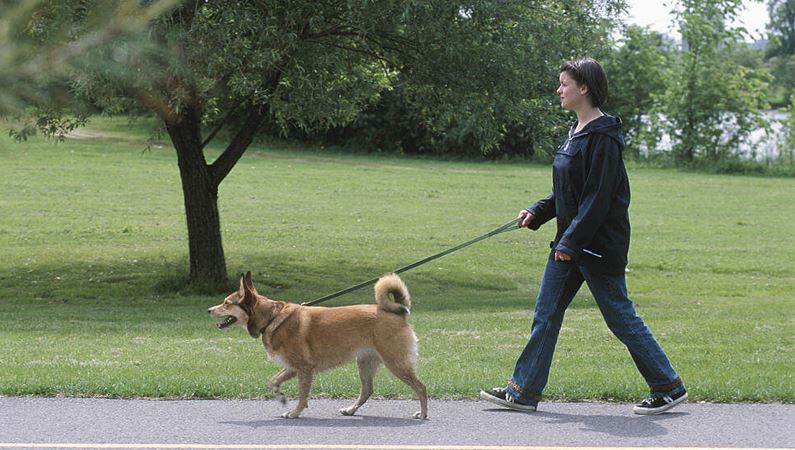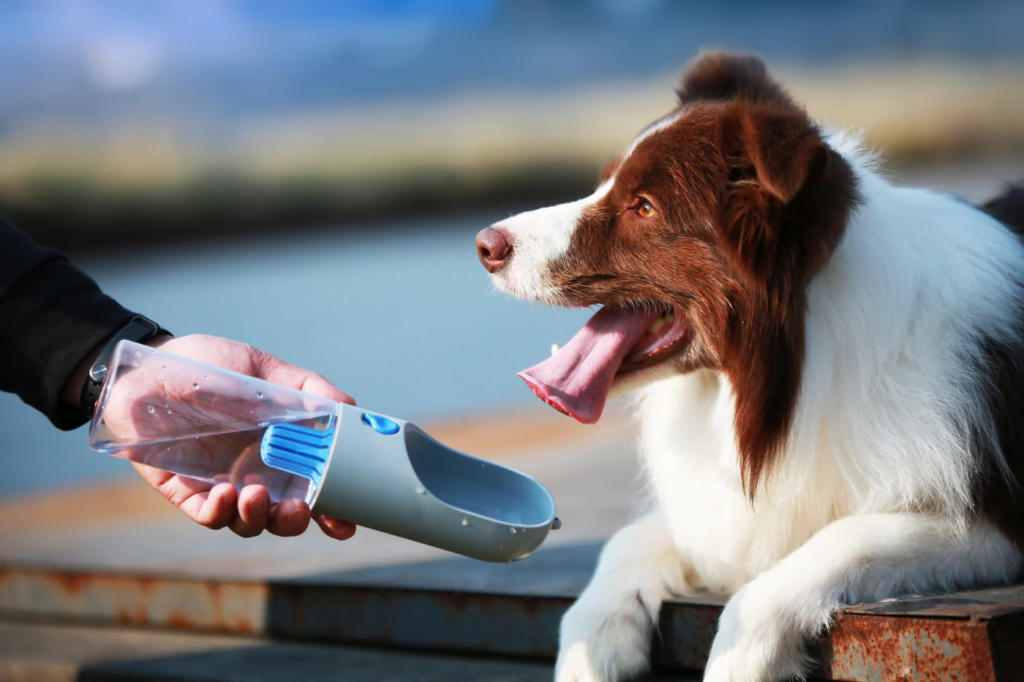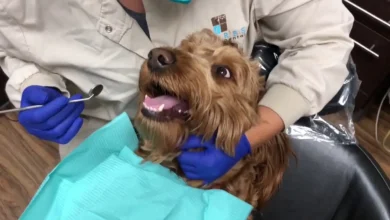Protect Your Dog from Heatstroke: Essential Tips for Hot Weather
Why High Temperatures Are Risky

During summer, temperatures can soar, posing serious risks to our canine companions. Experts strongly advise against walking dogs when the thermometer hits 35°C (95°F) or higher. Dogs do not sweat like humans; they regulate their body temperature primarily through panting and their paw pads. When exposed to extreme heat, these mechanisms can be insufficient, leading to severe consequences like heatstroke.
Heatstroke and Burned Paw Pads
The heat can be unbearable for dogs, leading to severe heatstroke and burned paw pads from hot pavements. Asphalt and concrete absorb heat quickly, reaching temperatures that can cause burns in just a few minutes. This makes it essential to avoid walking your dog during the hottest parts of the day.
Recognize the Signs of Heatstroke in Dogs

Symptoms to Watch For
Understanding the symptoms of heatstroke in dogs is crucial. Early detection can save your pet’s life. Watch for:
- Heavy panting: This is often the first sign of overheating.
- Excessive drooling: Dogs drool more as they try to cool down.
- Lethargy: A lack of energy or enthusiasm for usual activities.
- Vomiting: This can indicate severe distress.
- Uncoordinated movements: Difficulty walking or standing can be a sign of heat exhaustion.
If you observe any of these signs, act quickly. Move your dog to a cooler area, offer water, and contact your veterinarian immediately.
Safe Walking Times for Dogs
Ideal Times for Walks
To protect your dog from heat-related illnesses, walk them during the coolest parts of the day. Early mornings and late evenings are ideal. Always check the pavement temperature before heading out. If it’s too hot for your hand, it’s too hot for your dog’s paws.
Choosing the Right Path
Select shaded trails or grassy areas for your walks. These surfaces are cooler and less likely to cause burns. Avoid open, sunny paths that can quickly become too hot for your dog.
Hydration is Key

Importance of Hydration
Ensuring your dog stays hydrated is essential during hot weather. Always have fresh water available, both at home and when you’re out. Dogs need more water during hot weather to regulate their body temperature and prevent dehydration.
Tips for Keeping Your Dog Hydrated
Consider carrying a portable water bowl on walks to keep your dog refreshed. You can also add a few ice cubes to their water bowl to keep it cool. Monitor your dog’s water intake and encourage them to drink regularly.
Provide Shade and Cool Resting Spots
Creating a Comfortable Environment
When outdoors, make sure your dog has access to shaded areas. Avoid leaving them in direct sunlight for prolonged periods. At home, create cool resting spots with fans or air conditioning to help them stay comfortable.
Cooling Off at Home
Set up a cool, shaded area in your yard with a canopy or umbrella. Indoors, use fans or air conditioning to keep the environment cool. You can also provide a damp towel for your dog to lie on.
Alternatives to Outdoor Exercise
Keeping Your Dog Active Indoors
On extremely hot days, consider alternative ways to keep your dog active without exposing them to dangerous heat. Indoor games, mental stimulation activities, and short, supervised water play can provide much-needed exercise and entertainment.
Engaging Activities
Play fetch with a soft toy, practice obedience training, or use puzzle toys to keep your dog mentally stimulated. Short, frequent play sessions can help expend energy without the risk of overheating.
Cooling Products for Dogs
Innovative Cooling Solutions
Invest in cooling products designed for dogs, such as cooling mats, vests, and bandanas. These can help regulate your dog’s body temperature and provide relief from the heat. Always supervise your dog when using these products to ensure their safety.
How to Use Cooling Products
Place a cooling mat in your dog’s favorite resting spot. Soak cooling bandanas in water and place them around your dog’s neck. Use cooling vests during walks to help keep their core temperature down.
Avoid Hot Pavements
Protecting Your Dog’s Paws
Pavement temperatures can become dangerously high during hot weather, causing burns to your dog’s paws. Stick to grassy areas or shaded trails. If walking on pavement is unavoidable, consider using dog booties to protect their sensitive paws.
Testing Pavement Temperature
Before walking your dog, press your hand against the pavement for seven seconds. If it’s too hot for your hand, it’s too hot for your dog. This simple test can prevent painful burns and keep your dog safe.
Never Leave Your Dog in a Parked Car
The Risks of Leaving Dogs in Cars
Leaving a dog in a parked car, even for a few minutes, can be deadly. Temperatures inside a car can quickly rise to fatal levels, even with the windows cracked. Always take your dog with you or leave them safely at home.
Safe Alternatives
If you need to run errands, leave your dog at home in a cool, comfortable environment. If you must travel with your dog, plan ahead and never leave them unattended in the car.
10 Frequently Asked Questions About Keeping Dogs Safe in Hot Weather
1. How can I tell if my dog is overheating?
Look for signs such as heavy panting, excessive drooling, lethargy, vomiting, and uncoordinated movements. These symptoms indicate that your dog is struggling to regulate its body temperature.
2. What should I do if my dog shows signs of heatstroke?
Move your dog to a cooler area, offer water, and contact your veterinarian immediately. Quick action can save your dog’s life.
3. When is the best time to walk my dog in hot weather?
Early mornings and late evenings are the best times to walk your dog when the temperatures are cooler and the pavement is less likely to be hot.
4. How can I keep my dog hydrated during summer?
Always provide fresh water, carry a portable water bowl on walks, and encourage your dog to drink regularly. Adding ice cubes to their water bowl can also help keep it cool.
5. What are some indoor activities for dogs on hot days?
Play fetch with soft toys, practice obedience training, use puzzle toys, and engage in short, supervised water play to keep your dog active indoors.
6. Are cooling products for dogs effective?
Yes, cooling mats, vests, and bandanas can help regulate your dog’s body temperature. Ensure you supervise your dog when using these products for safety.
7. How can I protect my dog’s paws from hot pavements?
Stick to grassy areas or shaded trails. If walking on pavement is unavoidable, use dog booties to protect their paws.
8. Why is it dangerous to leave dogs in parked cars?
Temperatures inside parked cars can rise quickly to fatal levels, even with the windows cracked. This can lead to heatstroke and death.
9. Can I use fans or air conditioning to keep my dog cool at home?
Yes, fans and air conditioning can help create a cool environment for your dog. You can also use damp towels and cooling mats for additional comfort.
10. What are the benefits of walking my dog during cooler parts of the day?
Walking during cooler parts of the day reduces the risk of heatstroke and paw burns. It also ensures a more comfortable and enjoyable experience for your dog.
Final Thoughts on Keeping Dogs Safe in Hot Weather
Hot weather poses significant risks to dogs, but with the right precautions, you can keep your furry friend safe and healthy. By understanding the dangers of heatstroke, recognizing its symptoms, and taking proactive measures, you can enjoy a worry-free summer with your dog. Remember, their safety is in your hands.




2 Comments